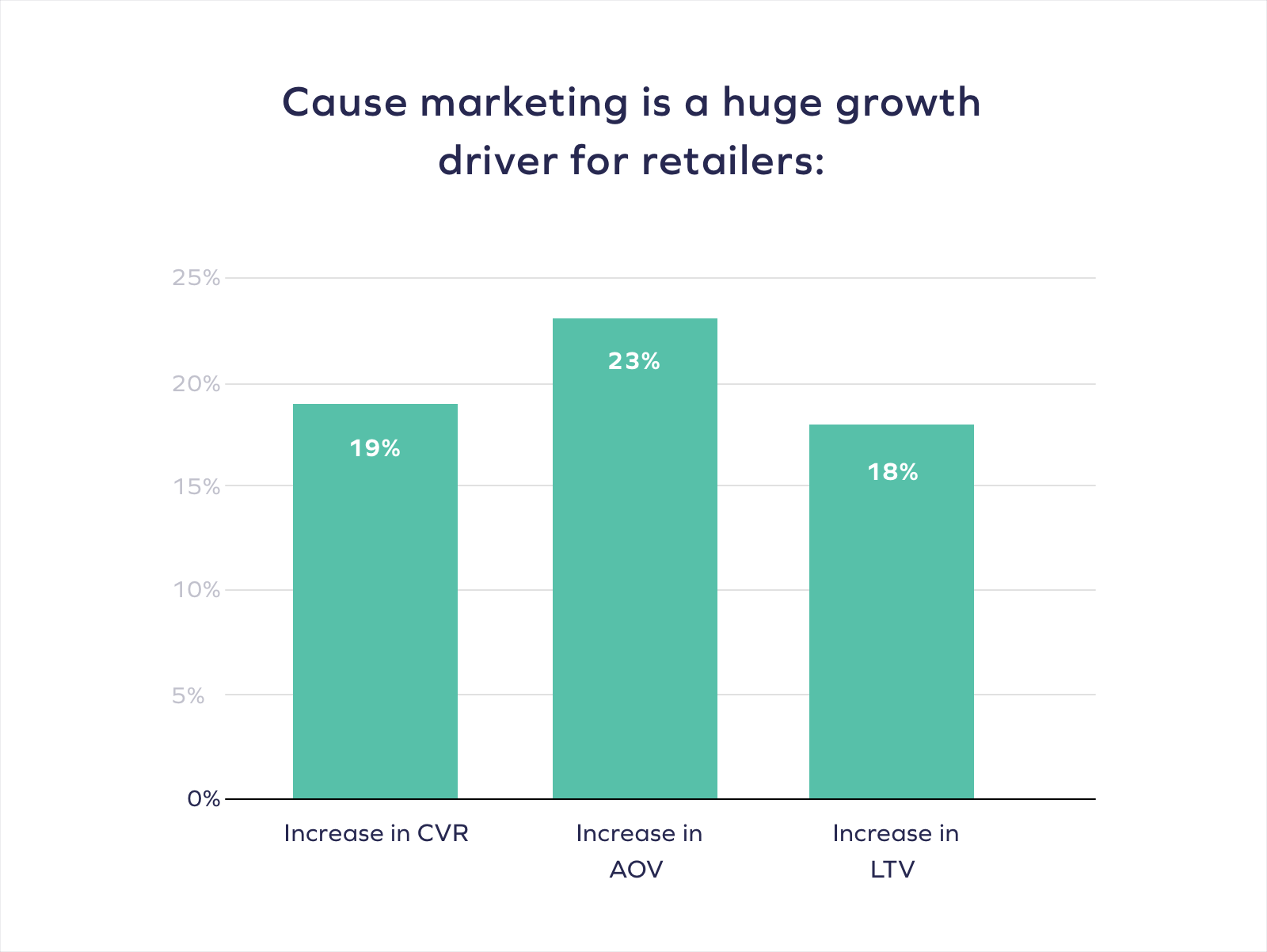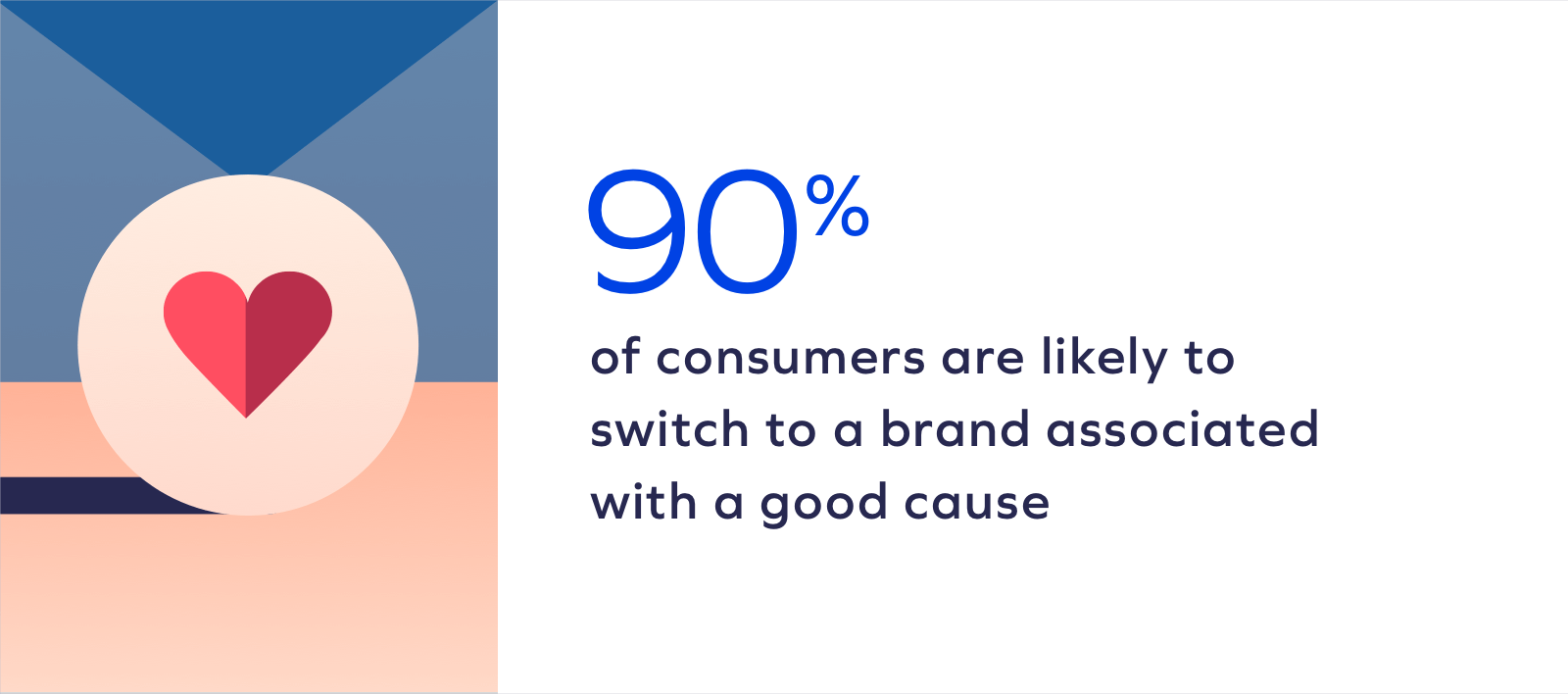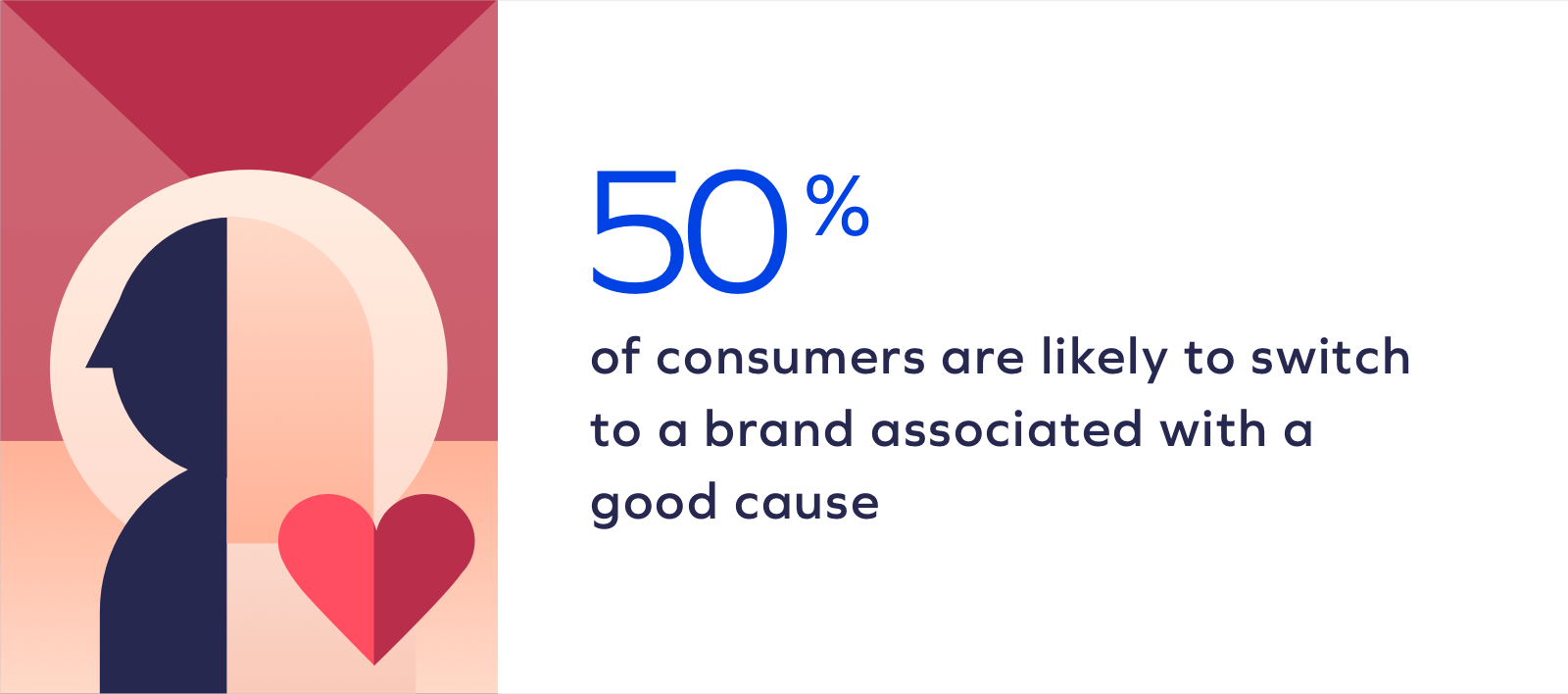Connect Your Brand to Meaningful Causes
What does your brand stand for? It’s an important question to answer, as consumers are increasingly voting with their wallets and choosing to support brands whose values align with their own.
 Product Page Guide
Product Page Guide
What does your brand stand for? It’s an important question to answer, as consumers are increasingly voting with their wallets and choosing to support brands whose values align with their own.
What does your brand stand for? It’s an important question to answer, as consumers are increasingly voting with their wallets and choosing to support brands whose values align with their own.
This chapter will provide an overview of cause marketing, and a blueprint for implementing it in an effective, authentic way.
Consider these statistics from Engage for Good:
The bottom line: giving back is good for business.
And while the COVID-19 pandemic has led to a great deal of economic uncertainty, consumers are actually donating to charity more than ever. In fact, nonprofit donations rose 7.5 percent in the first half of 2020 compared to 2019, according to The Chronicle of Philanthropy.
In difficult times, people want to help. And they are expecting brands to do more than operate for a profit and help out their communities as well. That’s why it’s crucial for eCommerce companies to embrace cause marketing.
Cause marketing is a type of Corporate Social Responsibility (CSR) in which a for-profit business’s promotional campaigns focus on both increasing profitably and making the world a better place. This can be done in two ways:
Amidst the pandemic, ShoppingGives has grown over 148%, with more than 1,400 retailers integrated with the eCommerce technology donating to over 6,000 individual nonprofit organizations. This has been a huge growth driver for retailers, with conversion rate increases of 19%, average order value increases of 23%, and lifetime value increases of 18%.

Corporate social responsibility and consumers’ expectations of it isn’t going to go away when COVID-19 does; the rise of conscious consumption is here to stay. Consumers are taking more time to educate themselves about a brand’s social impact efforts and are even willing to pay more for a product from a purpose-driven brand, even if they can get a similar product at a lower cost from a competitor. And if your brand doesn’t already have a solid cause marketing strategy in place, you’re going to lose to competitors who do.
While giving back to charity is a great start to implementing cause marketing, the end goal should be to have social impact integrated throughout your entire business. To have an authentic cause marketing strategy that resonates with your customers, your brand should align itself with causes that you not only believe in, but that also make sense for your overall brand as well.
These steps will help you to create a solid cause marketing strategy that will help you win more customers while doing good:
The right cause for your brand has three important components:
For example, if your brand specializes in outdoor apparel, a sustainability-focused or environmentally-friendly nonprofit might make more sense than one dedicated to teaching girls how to code. Likewise, a brand that sells food products would be better served partnering with an organization that seeks to end hunger than one that plants trees. While supporting a cause through your brand is a great step, picking a cause that truly aligns with your brand will make the effort more genuine, and can better engage and excite your employees and customers as well.
Your brand should also live by its values and be mindful of what is happening in the world around us. Whether it’s natural disasters like a tropical storm or a global pandemic, tomorrow is unpredictable. Being able to shift your brand’s impact efforts based on current needs is becoming more prevalent as consumers are increasingly expecting brands to step up and help out in times of crisis.
When choosing your cause, focus on passion, relevance, and authenticity.
What do you want to accomplish with your cause marketing strategy? It’s important to have two goals: one goal should be revenue-focused, while the other should be impact-focused. This way, you’ll be better able to assess its success when you analyze the campaign data.
Once you have your cause and your goals laid out, it’s time to figure out how to implement them. You’ll want to find a management tool like ShoppingGives that can handle your impact campaign while helping you to collect actionable data. It’s also important to select technology that integrates with your existing store platform and apps.
Once your campaign launches, it’s time to promote it. This should be done to both your existing customers and to those targeted audiences who support your chosen cause. You may want to create a hashtag around the campaign, and urge customers to share their purchases on social media.
Your cause marketing strategy is an important extension of your business. Make sure you and your customers are on the same page, and make it easy for your customers to get involved with your impact strategy as well.
Research shows that 90% of consumers are likely to switch brands to one associated with a good cause, given comparable price and quality. If your competitors aren’t engaging in cause marketing, that presents an opportunity for your brand to be the one they switch to.

Consumers are shopping more consciously and are more likely to be loyal to a brand with a cause. Furthermore, if your brand aligns with a cause that your customers care about, that’s an even bigger win! As a brand, you should be bringing your customers into the conversation of social impact and gain a better understanding of what’s important to them. By doing this, you may even end up with a brand advocate — and happy customers are your best marketing tool.
Research shows that more than 50% of customers are willing to spend more on a product or service that is ethical. It’s not about being the cheapest option anymore; it’s about being the best when it comes to value alignment.

Brands are embracing cause marketing more than ever, and seeing substantial rewards. Here are two brands who won big by believing in something.
Apparel brand White + Warren partnered with ShoppingGives because they wanted to give back and give customers a way to participate. Since implementing ShoppingGives, White + Warren have donated to 461 different nonprofits, with a special emphasis on the American Heart Association, and have seen the following results:
CBD brand Highline Wellness installed ShoppingGives’ Shopify app to make the donation process easier. They ran a campaign for animals affected by the Australian bush fires through Friends of the Australian Bush Heritage Fund, which included testing ads with product-focused vs. impact-focused messages and created GIFs that show the product and the chance to donate.
Their results? The highest impressions and engagements for any ad they’d ever done. Plus, they donated over $5,500 while increasing AOV by 6% on orders with donations.
Cause marketing gives your brand a unique opportunity to stand for something while better engaging your customers and creating a positive impact. The era of conscious consumption is only growing and brands who give back will culminate long-term relationships with loyal customers who share their beliefs. In the end, cause marketing benefits brands, customers, and nonprofits alike, and it’s never too early to get started.
“Yotpo is a fundamental part of our recommended tech stack.”
 Laura Doonin, Commercial Director
Laura Doonin, Commercial Director








